Review by Klaus Schroiff, published May 2022
Introduction
No system is complete without macro lenses and while Canon has been offering the RF 85mm f/2 STM IS macro early, it isn’t really aligned to professional needs, at least.
In order to serve this market, Canon finally released the Canon RF 100mm f/2.8 L USM IS macro. As professional-grade lenses go, the price for the entry ticket is on the high side at $1400/1500EUR – that’s more than double the amount you have to pay for the faster RF 85mm f/2. This raises the question of whether it’s really worth it … so let’s find out.
In terms of build quality, it is certainly on a different level. While it’s still based on some kind of advanced compound material. it certainly feels sturdy. On top of this, it is sealed against dust and moisture.
Unlike its cheaper cousin, it also doesn’t extend during focusing so in combination, it’s much better prepared for more difficult outdoor environments. The focus ring operates smoothly and there’s also the usual customizable “RF” control ring. And the rings don’t even stop here. There’s another one. 🙂 A special feature of the RF 100mm f/2.8 L USM IS macro is the “Spherical Aberration Control Ring”. Basically, it allows you to deliberately introduce an optical defect that alters the way the lens is rendering images – more on this later. The combination of macro-and SA capabilities has somewhat super-sized the lens, unfortunately. It’s the longest 100mm macro that we have seen to date.
A barrel-shaped hood is part of the package. A rotating tripod collar is optionally available.
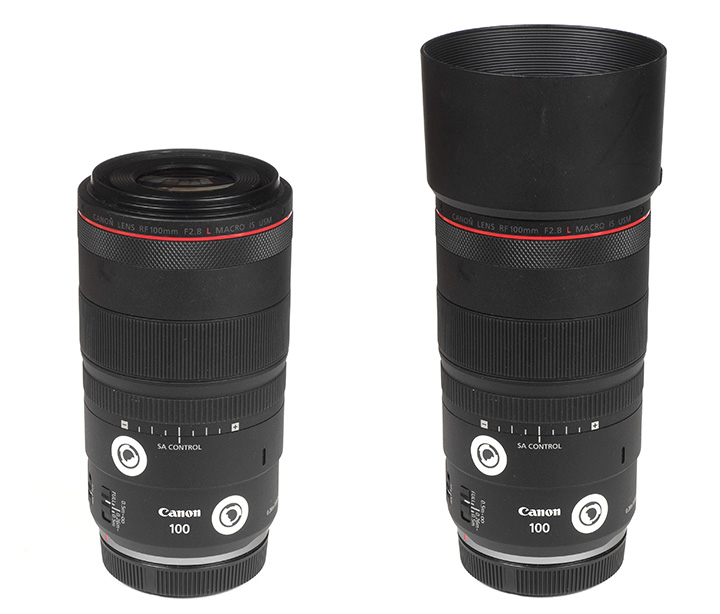
Another improvement over its predecessors is the ability to focus down to a magnification ratio of 1.4:1. This is probably a good idea because some Chinese manufacturers are offering macro lenses that even can do 2:1 already.
Macro lenses tend to be rather slowish when it comes to auto-focusing but that’s not really the case here. The Canon lens incorporates a Dual-Nano USM drive which is pretty fast and quiet. If needed, you can still use a focus limiter switch to avoid focus hunting in tricky scenes. Manual focusing works “by wire” but you barely notice the difference compared to mechanical coupling. The built-in image stabilizer is good enough for 5 f-stops – and up to 8 f-stops when combined with in-camera IS. This is certainly appreciated when shooting macro because things can get pretty shaky at very close focus distances. Whether it’s truly a 5/8 f-stop gain depends on your degree of coffee intake.
| Specifications | |
|---|---|
| Optical construction | 17 elements in 13 groups |
| Number of aperture blades | 9 (rounded) |
| min. focus distance | 0.26m (max. magnification ratio 1.4:1) |
| Dimensions | 81.5x148mm |
| Weight | 685g |
| Filter size | 67mm |
| Hood | barrel-shaped (bayonet mount, supplied) |
| Other features | Control ring, focus distance switch, 5 f-stop image stabilizer, SA-control, optional tripod collar, fluorine coating, dust- & moisture-proof |
Distortion
Macro lenses tend to be very well corrected in terms of image distortion. While not perfect with a ~0.3% pincushion distortion, it’s much better corrected than your average mirrorless format lens.
And the remaining distortion can be easily auto-correct with minimal loss in image quality.


Vignetting
The vignetting figures aren’t quite as impressive. For a medium tele-lens, the raw vignetting is very high (2 EV/f-stops) at f/2.8, although stopping down a little bit solves the problem already. However, auto-correction has to be quite invasive at a fully open aperture – resulting in increased sensor noise in the corners.
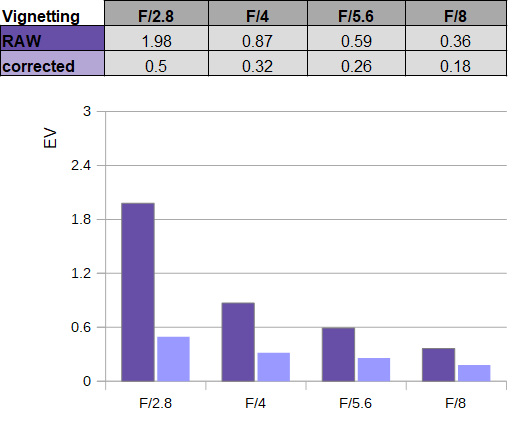
MTF (resolution) at 45 megapixels
The resolution characteristic of the Canon RF 100mm f/2.8 L USM IS macro is impressive even on a high megapixel body. Images are already sharp across the frame at f/2.8. Stopping down to f/4 lifts the quality a bit and the excellent peak performance is reached at f/5.6. Stopping down further limits the resolution due to diffraction. The quality is still very fine at f/11. f/16 is passable and f/22 should be avoided, really.
The centering quality of the lens was Ok but not great. The field curvature is minimal but present.
Please note that the MTF results are not directly comparable across the different systems!
Below is a simplified summary of the formal findings. The chart shows line widths per picture height (LW/PH) which can be taken as a measure of sharpness. If you want to know more about the MTF50 figures you may check out the corresponding Imatest Explanations.

MTF (resolution) at 30 megapixels
Not everybody has an expensive EOS R5, so some of our readers are surely interested in how the lens performs on a more sanely priced camera.
Unsurprisingly, the results are even better on pixel level due to the reduced pixel density. Once again you can, you can easily use the lens wide-open. f/22 remains unimpressive due to impressive. Please note that the MTF numbers are higher at f/22 compared to the 45mp chart because the edges are “sharper” and as such, more receptive to the mild default sharpening that we apply during RAW conversion.

Chromatic Aberrations (CAs)
Lateral CAs (color shadows at the image borders) are well controlled, with an average CA pixel width of around 0.8px. Auto-correction can fix this without impacting image quality.

Bokeh
Given the large max aperture and macro capabilities, the quality of the bokeh will be an interesting aspect for most users.
Out-of-focus highlights are nicely rendered. The discs have a very smooth inner zone and minimal outlining effect. Please note that the outlining gets emphasized when stopping down. The circular disc shape is maintained from f/2.8 to f/5.6 which is better than on most lenses.

The above is true for the image center. As so often, the circular disc shape deteriorates to cat eyes in the image corners – fairly “early” at f/2.8 in this case. The “circular shape” zone broadens at f/4, although the corner discs look less pleasing. Fairly circular corner discs require f/5.6.



As far as the general blur is concerned, there are two flavors to discuss here. The background blur (shown to the left below) is very smooth and buttery whereas the foreground blur (to the right) is quite harsh.

Bokeh Fringing
The Canon RF 100mm f/2.8 L USM IS macro isn’t an apochromatic lens. However, surprisingly, axial CAs are minimal even at f/2.8. Stopping down eliminates the remaining color fringing traces.
As you may spot, the focus point moves to the rear when stopping down. These RSA (residual spherical aberration) are a bit surprising on a macro lens because they can get relevant at large-aperture settings in close-focus scenes.

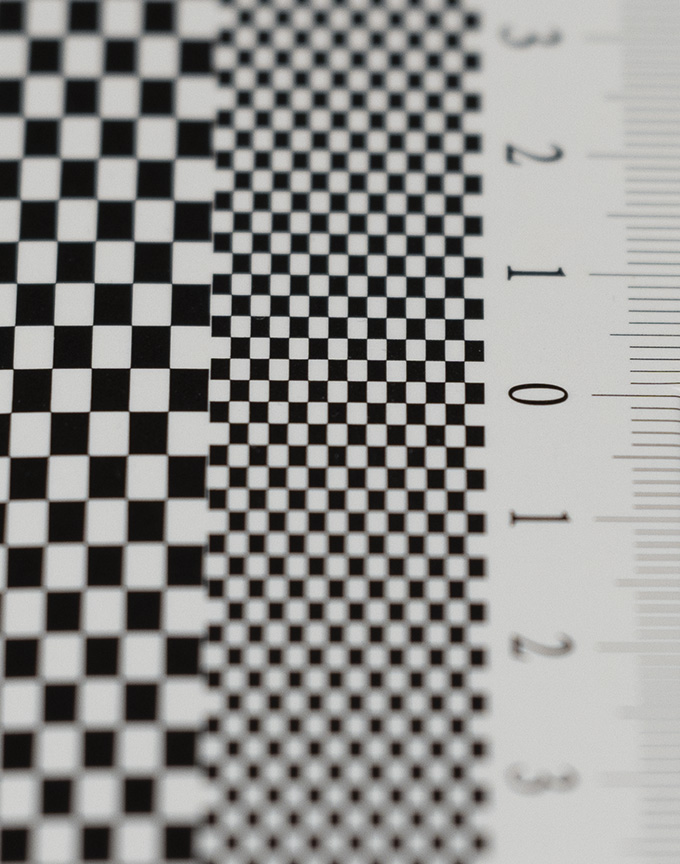

Spherical Aberration Control
As mentioned in the introduction, the Canon lens features an SA control ring. You may be surprised to read that Spherical Aberration Control is not a new thing. Ages ago (1987), Canon released the EF 135mm f/2.8 Soft Focus which featured the mechanism already. Using the SA control ring between +/-2, you can move a lens element out of position introducing an optical defect. Depending on the setting this has a dramatic effect on the bokeh as well as overall image sharpness.
Let’s check up the background highlights first. As you can see below a -2 setting produces “bubble” highlights whereas the +2 setting produces feathered discs.
Note: Sorry for the dirt in the highlight discs. Seems as if there were some particles on the rear element of the lens at the time of shooting.



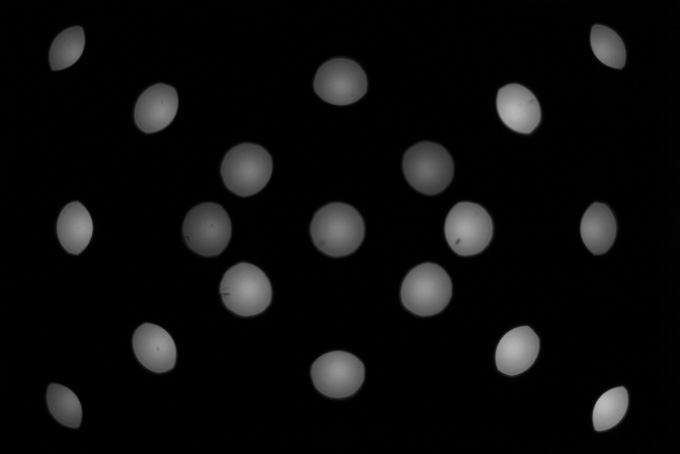

The same with a little more background contexts:
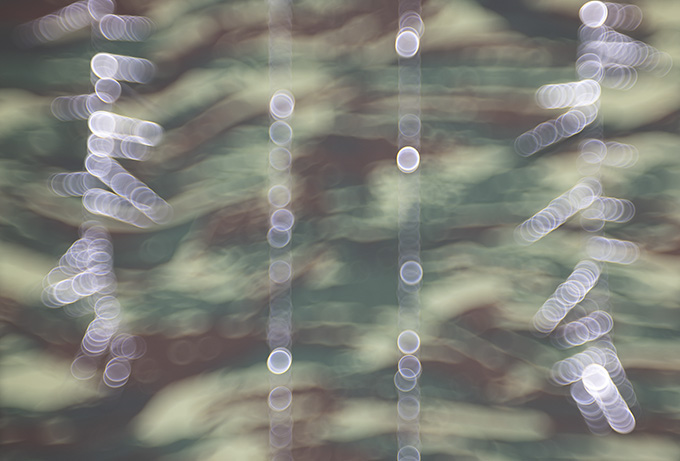

If it weren’t just about the out-of-focus blur, this would be great. However, introducing optical defects does affect the sharpness in the focus zone as well. The images below illustrate the haziness that is introduced here. While some may like this early 1900s style of quality, it is mostly just … odd. You can find the full-size images in the sample image section on the next page.
Also, notice the shift in focal length – both shots were taken on a tripod at the same distance.


Sample Images
Competition
As of the time of this article, Canon hasn’t licensed their mount to other manufacturers and the third-party gang is still busy reverse-engineering the protocol. So if you are in the market for a medium macro lens, you got basically 3 mainstream options – the RF 100mm f/2.8 L USM IS macro (shown to the left), the RF 85mm f/2 STM IS (center) or a DSLR-era macro lens with an adapter (here: the Canon EF 100mm f/2.8 L USM IS to the right). The new RFs are a touch better in the outer image field compared to the EF lens. The RF 100mm is also superior in terms of bokeh fringing/LoCA but then there are the RSAs (…). An obvious difference is the build quality which isn’t that great on the RF 85mm and it only offers a max magnification ratio of 1:2. On the other hand, it’s an f/2 lens thus one stop faster. You may also notice that the RF 100mm is as long as the EF 100mm with the RF-to-EF adapter – it’s really a long lens of its kind.

Visual comparison courtesy of camerasize.com.
The Canon RF 100mm f/2.8 L USM macro IS is a great lens with some added weirdness. Optically, it is capable of delivering very sharp images straight from f/2.8 - just as you would expect from a moderately fast macro lens.
Image distortions are basically negligible even without correction. Lateral CAs are on the low side as well and can be easily corrected anyway. This can't be said of the raw vignetting which is comparatively high at f/2.8 so auto-correction should remain activated. The quality of the bokeh is generally pleasing with a smooth background blur and nicely rendered highlights. The foreground blur isn't ideally rendered but that's usually of lesser concern. Bokeh lovers may also like the SA feature on the lens but, to be honest, for most of us, it'll remain an oddity that you have to pay for without using it. Maybe video makers can appreciate it more than photographers. That being said - the massive focus-breathing doesn't help with videos. A bit concerning are the RSAs when stopping down - focus shifts aren't helpful at very close focus distances. It's something to keep in mind when shooting at least.
The build quality is in line with what we have seen from other RF L lenses. The (long) lens feels sturdy albeit a bit "hollow" maybe. Formally there's nothing wrong with using good quality plastics though. The dust- and splash-proof design, as well as the internal focus system, are certainly appreciated. The Dual-Nano USM drive allows for fast and quiet auto-focusing. Manual focusing is also a joy "despite" or because of the by-wire system. The Hybrid IS system, as Canon calls it, combines in-lens and in-camera IS with a claimed efficiency of up to 8 f-stops. Yours truly has rarely achieved critically sharp images (by my standards) at the extreme end of this claim but there is no doubt that this helps - a lot.
The Canon RF 100mm f/2.8 L USM macro IS is a worthy representative of its species and an obvious choice for Canon RF mount users. That being said - it's also a darn expensive one. Eventually, third-party AF macro lenses will be available, making sales tougher in this class. Or just use an affordable EF macro lens via adapter. Still, this doesn't diminish the qualities of this lens - highly recommended!
-
Optical Quality
-
Build Quality
-
Price / Performance


